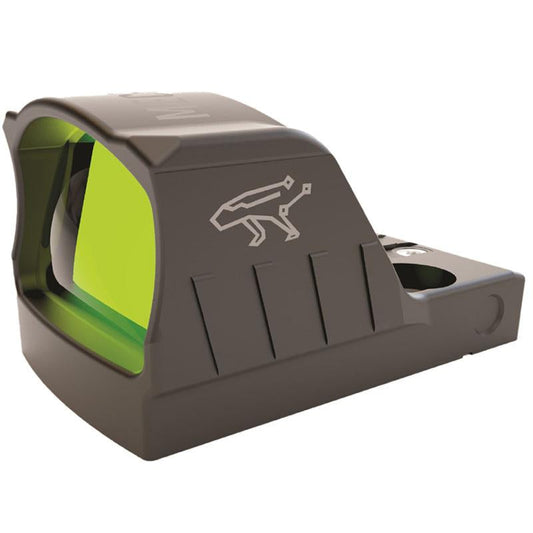

Century Mecanik MO1 Tactical Micro Reflex Sight - 3 MOA Red Dot delivers precise target acquisition with user-friendly features. Designed in collaboration with Special Operations Forces and Law Enforcement, this sight enhances your shooting experience in various environments. Its Tactical Concave Face (TCF) design allows for quick slide manipulation while maintaining an unobstructed view of your target, making it ideal for high-pressure situations. Equipped with advanced motion and light sensors, the MO1 automatically adjusts brightness, ensuring optimal visibility in changing light conditions.
Weighing just 3.5 oz and made from aircraft-grade aluminum, this sight is built to endure rugged conditions. The compact design fits seamlessly on Canik models, offering versatility without compromising performance. With a 3 MOA red dot, you can quickly acquire and engage targets, especially in urban settings where precision is critical.
Features:
- AGGRESSIVE SIDE SERRATIONS for enhanced grip and seamless slide manipulation.
- MOTION SENSOR that conserves battery life when not in use, ensuring long-lasting performance.
- AUTOMATIC LIGHT SENSOR adjusts the brightness of the red dot to match ambient lighting, providing optimal visibility.
- 3 MOA RED DOT ideal for quick target acquisition, especially in urban environments.
- CO-WITNESSING CAPABILITY allows for alignment with your favorite iron sights for added accuracy.
- COMPACT DESIGN fits seamlessly on various Canik models, ensuring compatibility and ease of use.
- DURABLE CONSTRUCTION engineered to withstand rugged conditions while maintaining reliability in performance.
- USER-FRIENDLY CONTROLS make adjustments easy, even in high-stress situations.
Technical Specifications Table
| Specifications | Details |
|---|---|
| Magnification | 1x |
| Lens Diameter | 22mm |
| Weight | 3.5 oz |
| Dimensions | 3.1" x 1.5" x 2" |
| Material | Aircraft-grade aluminum |
What’s in the Box?
- Lens covers
- Padded case
- Neck strap
Customer Reviews
"The Century Mecanik MO1 is a game-changer! I can quickly acquire targets without losing focus." - Alex R.
"Perfect for my tactical needs. The automatic brightness feature is fantastic!" - Jamie L.
"Absolutely love the design and quality. It fits perfectly on my Canik!" - Mark T.
FAQ
What makes the Century Mecanik MO1 Tactical Micro Reflex Sight unique?
This sight features a Tactical Concave Face (TCF) design that allows for easy slide manipulation without blocking your view. This design is particularly beneficial during high-pressure situations where quick target acquisition is essential.
How does the battery life hold up?
The MO1 is equipped with a motion sensor that conserves battery life by powering off when not in use. This feature provides users with dependable performance even during extended periods of inactivity.
Can I use this sight with other firearms?
While the MO1 is optimized for Canik models, it may be compatible with other firearms if the correct mounting solutions are used. Always verify compatibility before making a purchase.
Similar Models
Looking for more options? Explore our complete lineup of tactical sights, including alternatives like the Century Mecanik MO2 for enhanced features and versatility. Find the perfect sight to elevate your shooting experience!
You May Also Like
Here’s some of our most similar products people are buying. Click to discover trending style.






